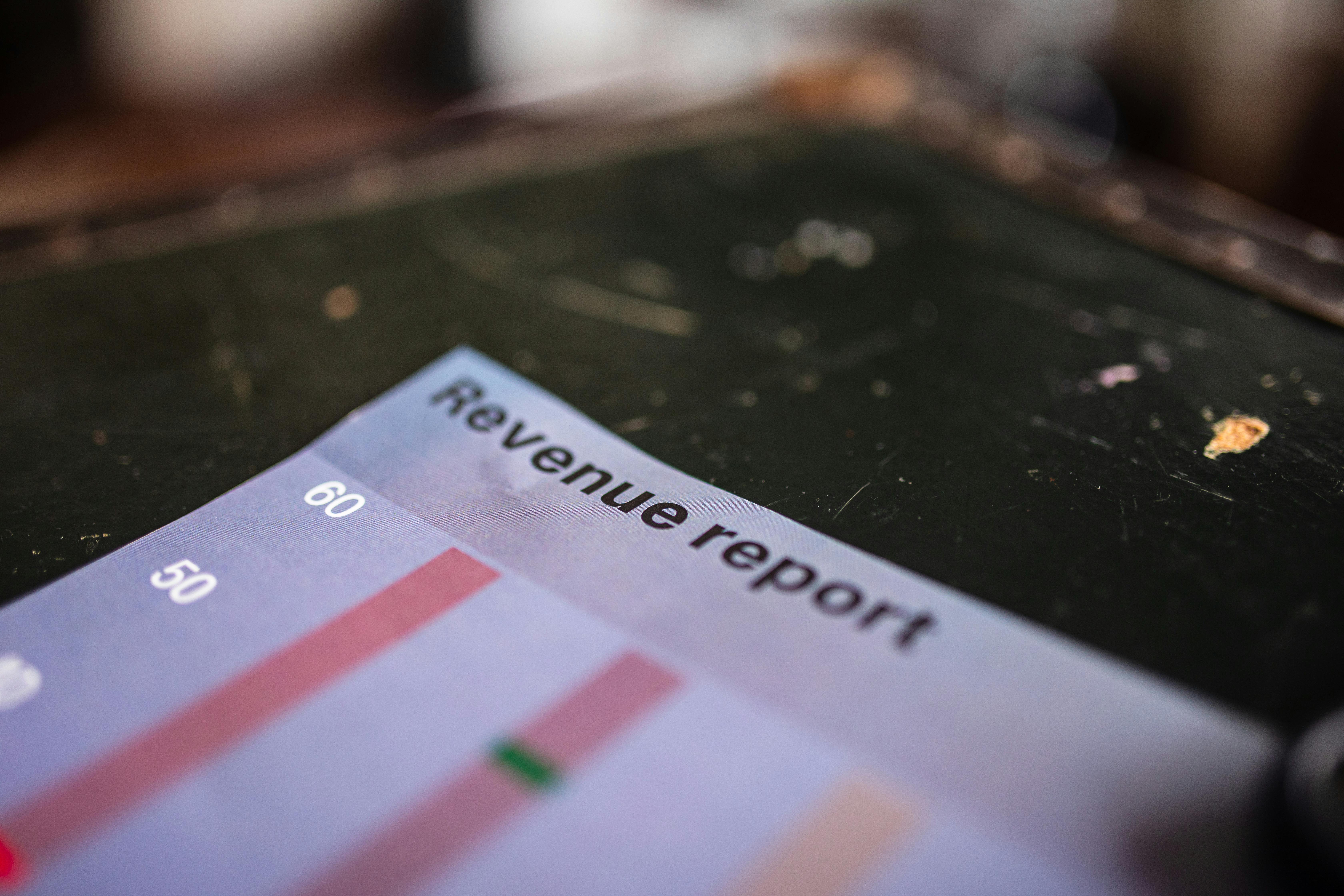In today’s digital landscape, understanding how to measure link-driven traffic from content marketing is crucial for any business looking to maximize its online presence. With the right strategies in place, you can transform your content into a powerful tool that not only engages your audience but also drives significant traffic to your site. But how do you ensure that your content marketing efforts are actually paying off? This article reveals the most effective techniques to track link-driven traffic and optimize your content for better results.
To effectively measure link-driven traffic, start by utilizing analytics tools like Google Analytics. These tools provide essential insights into how your audience interacts with your content. You can track user behavior, such as the pages they visit and the duration of their stay, allowing you to pinpoint which pieces of content are driving the most traffic. Additionally, monitoring referral sources can help you identify which links are sending visitors your way. Have you ever wondered which of your content pieces resonate most with your audience? By analyzing this data, you can refine your content strategy, focusing on topics that generate the most interest.
Furthermore, don’t overlook the importance of setting up UTM parameters for your links. This method allows you to track specific campaigns and understand which links are resulting in conversions. Are you leveraging social media effectively? By measuring traffic from various platforms, you can adapt your approach based on what works best. Exploring these methods will not only give you clarity on your content’s performance but also empower you to make data-driven decisions that enhance your overall content marketing strategy. Ready to dive deeper into the world of content marketing and traffic measurement? Let’s get started!
Unlocking the Secrets: 7 Proven Strategies to Measure Link-Driven Traffic from Your Content Marketing Efforts

In the fast-paced world of digital marketing, understanding how to measure link-driven traffic from your content marketing efforts is crucial. Many marketers struggle with this task, often feeling overwhelmed by the vast amount of data available. It’s not just about creating great content; it’s about knowing how that content is performing and driving traffic to your site. In this post, we will explore seven proven strategies to effectively measure link-driven traffic from your content marketing initiatives, ensuring that you can unlock the secrets to your success.
1. Set Clear Goals
Before you start measuring anything, you should set clear, measurable goals for your content marketing strategy. What do you want to achieve? Are you looking to increase brand awareness, generate leads, or boost sales? Establishing specific objectives will help you determine which metrics to focus on. For example, if your goal is to increase website traffic, then tracking unique visitors and page views will be important.
2. Use UTM Parameters
One of the best methods to track link-driven traffic is by using UTM parameters. These are tags added to your URLs that provide detailed insights into where your traffic is coming from. By adding UTM parameters to your links, you can see exactly which campaigns and content pieces are driving traffic. Here’s a simple breakdown of UTM parameters:
- utm_source: Identifies the source of the traffic (e.g., newsletter, social media).
- utm_medium: Specifies the medium used (e.g., email, CPC).
- utm_campaign: Indicates the specific campaign (e.g., spring_sale).
When you analyze your traffic in Google Analytics, these parameters will help you pinpoint the origin of your link-driven traffic.
3. Leverage Google Analytics
Google Analytics is a powerful tool that can help you measure link-driven traffic effectively. You can track various metrics, such as:
- Sessions
- Users
- Pageviews
- Bounce rates
By navigating to the Acquisition section in Google Analytics, you can see which channels are bringing in traffic. This will enable you to compare the performance of different content pieces and campaigns, helping you optimize your strategy.
4. Monitor Referral Traffic
Another way to measure link-driven traffic is by monitoring referral traffic. This involves tracking how many visitors come to your site from links on other websites. To do this, go to Google Analytics, and under Acquisition, click on All Traffic, then Referrals. You will see a list of websites that are sending traffic to yours. Analyzing this data can give you insights into which partnerships or guest posts are most effective.
5. Implement Heatmaps
Heatmaps are visual representations of user behavior on your website. They show you where users are clicking, scrolling, and spending time on your pages. By using tools like Hotjar or Crazy Egg, you can see how visitors interact with your content. This data can guide you in optimizing your content layout and links to improve link-driven traffic.
6. Analyze Social Media Metrics
If you’re sharing content on social media, it’s essential to track how these platforms contribute to your link-driven traffic. Each social media platform has its analytics tool. For instance, Facebook Insights and Twitter Analytics provide valuable data on engagement and clicks. By assessing these metrics, you can see which platforms are driving the most traffic and adjust your strategy accordingly.
7. Employ A/B Testing
A/B testing is a method used to compare two versions of a webpage or content piece to see which performs better. By testing different headlines, calls to action, or layouts, you can identify what resonates most with your audience. This strategy helps you refine your content marketing efforts, ultimately leading to increased link-driven traffic.
Practical Example of Tracking Success
Let’s say you wrote a blog post about the latest fashion trends and shared it across different platforms. You can:
- Use UTM parameters to track the performance of links shared on Facebook versus Twitter.
- Check Google Analytics to see how many visitors came from these social platforms.
- Monitor referral traffic to see if fashion-related websites linked back to your content.
By analyzing these data points, you’ll get a clearer picture of which strategies are working and where to focus your efforts for maximum impact.
Each of these strategies can provide you with valuable insights into your content marketing efforts. Measuring link-driven traffic isn’t just about numbers; it’s about understanding your audience and refining your approach based on data. In a city like New York, where competition is fierce, having a solid grasp on how to measure your content’s performance can set you apart from others. By implementing these seven strategies, you’ll be better equipped to navigate the complexities of digital marketing and maximize your content’s reach and effectiveness.
The Ultimate Guide: How to Accurately Track Link-Driven Traffic and Boost Your Content Marketing ROI

In the ever-evolving world of digital marketing, tracking link-driven traffic is crucial for understanding how your content marketing efforts are performing. Many marketers struggle to accurately measure this traffic, which can lead to underestimating the return on investment (ROI) of their campaigns. In this ultimate guide, we’ll delve into effective strategies to measure link-driven traffic from content marketing, helping you boost your ROI and optimize your strategies.
Understanding Link-Driven Traffic
Link-driven traffic refers to visitors who arrive at your site through hyperlinks. These links can come from various sources, including social media, blogs, email newsletters, and other websites. It’s essential to track this traffic because it helps you identify which channels are most effective in driving visitors to your content.
To properly track link-driven traffic, you first need to set clear goals for your content marketing efforts. Ask yourself what you want to achieve: Is it increasing brand awareness, generating leads, or driving sales? Once you have your goals set, you can begin to implement tracking methods.
Setting Up UTM Parameters
One of the most effective ways to track link-driven traffic is by using UTM parameters. UTM stands for Urchin Tracking Module, and these are tags added to the end of your URLs. They allow Google Analytics to capture data about where your traffic is coming from. Here’s how to set them up:
- Source: Identify the source of your traffic (e.g., Facebook, newsletter).
- Medium: Specify the medium (e.g., social, email).
- Campaign: Name your campaign to keep your data organized (e.g., spring_sale).
For example, a URL with UTM parameters might look like this:
www.yoursite.com/?utm_source=facebook&utm_medium=social&utm_campaign=spring_sale.
Utilizing Google Analytics
Once you’ve got UTM parameters set up, the next step is to dive into Google Analytics. This powerful tool provides insights into how users interact with your content. Here are key metrics to focus on:
- Sessions: The total number of visits to your website.
- Users: The number of unique visitors during a specific period.
- Bounce Rate: The percentage of visitors who leave without exploring further.
- Goal Completions: How many users completed a specific action (like filling out a form).
To see link-driven traffic, navigate to Acquisition > Campaigns > All Campaigns in Google Analytics. Here, you can filter by your UTM parameters to see how specific campaigns are performing.
Tracking Conversions
Measuring link-driven traffic isn’t just about counting visitors; it’s also about tracking conversions. Here’s how to effectively measure conversions from your content marketing:
Define Conversion Goals: What actions do you want users to take? This could be signing up for a newsletter, making a purchase, or downloading a resource.
Set Up Goals in Google Analytics: Use the Admin section to define what counts as a conversion. This helps in tracking how many visitors from specific links complete your desired actions.
Review Conversion Rates: Look at the conversion rates of different traffic sources to determine which links are driving the most valuable traffic.
Analyzing Performance with A/B Testing
A/B testing is a fantastic way to measure the effectiveness of your content marketing efforts. By creating two versions of a piece of content, you can see which one performs better. Here’s how to implement A/B testing for link-driven traffic:
- Choose the Element to Test: This could be the headline, call-to-action, or even the layout.
- Run Your Test: Share both versions through the same channels and track how users respond.
- Analyze Results: Use Google Analytics to see which version had higher engagement or conversion rates.
Leveraging Social Media Analytics
If you’re using social media to drive traffic, take advantage of the analytics tools provided by platforms like Facebook, Twitter, and LinkedIn. These tools can give you insights on:
- Click-through rates on shared links.
- Engagement metrics, including likes, shares, and comments.
- Demographics of users who interacted with your content.
Conclusion
By accurately tracking link-driven traffic from your content marketing efforts, you can make informed decisions that lead to better ROI. Implementing UTM parameters, utilizing Google Analytics, tracking conversions, conducting A/B tests, and leveraging social media analytics are all effective strategies. Remember, the key to success lies in continuously analyzing and adjusting your tactics based on the data you collect. Stay proactive, and your content marketing efforts will yield significant results.
Are You Measuring Your Success? 5 Essential Metrics for Evaluating Link-Driven Traffic in Content Marketing

Are you measuring your success? This question is critical for any business that seeks to thrive in the digital landscape, especially in a bustling hub like New York City. In the realm of content marketing, link-driven traffic is a significant factor that can dictate your online presence, brand authority, and ultimately your revenue. But, how do you measure link-driven traffic from content marketing effectively? Here are five essential metrics that can help you evaluate how well your content is performing and whether it’s truly driving the traffic you desire.
1. Organic Traffic Growth
One of the first things you should look at is organic traffic growth. This metric refers to the number of visitors that come to your site through search engines without paid advertisements. If your content is optimized well for SEO, you should see a steady increase in this traffic over time. To measure this, you can use tools like Google Analytics. Just check your organic traffic numbers month-over-month and see if there’s a positive trend.
- Example: If your website had 1,000 organic visitors in January and 1,500 in February, that’s a 50% increase. That’s a good sign your content is attracting attention.
2. Referral Traffic
Referral traffic is another key indicator. This metric tracks visitors who come to your site from other websites, often through links in blog posts, articles, or social media. High referral traffic suggests that your content is valuable enough for others to link to it. You can monitor this through Google Analytics by checking the “Acquisition” section.
- Key Points:
- Look for high-authority websites linking to your content.
- Identify which content generates the most referral traffic.
- Evaluate the quality of the traffic (are they engaging or bouncing?).
3. Backlink Quantity and Quality
The number and quality of backlinks your content receives are critical metrics. Backlinks are links from other websites that point to your content, and they can significantly affect your site’s authority and ranking in search engines. You can use tools like Ahrefs or Moz to track the backlinks efficiently.
- Considerations:
- A high number of backlinks from low-quality sites might not help you.
- Focus on earning backlinks from reputable sources in your niche.
- Keep track of the anchor text used in backlinks; relevant keywords can help improve your rankings.
4. Engagement Metrics
Engagement metrics are crucial for understanding how well your audience interacts with your content. This includes bounce rate, average session duration, and pages per session. If people are clicking on your links but leaving quickly, it could mean that your content isn’t resonating.
- Engagement Metrics Explained:
- Bounce Rate: The percentage of visitors who leave after viewing just one page. Lower bounce rates indicate better engagement.
- Average Session Duration: The average time a user spends on your site. Longer durations often signal valuable content.
- Pages Per Session: This shows how many pages a user visits in one session. More pages indicate interest in your content.
5. Conversion Rates
Ultimately, the goal of content marketing is to convert visitors into customers, subscribers, or leads. Measuring conversion rates helps you understand how effective your content is at achieving these objectives. You can set up goals in Google Analytics to track conversions effectively.
- Conversion Tracking:
- Define what a conversion means for your business (e.g., sales, form submissions, newsletter sign-ups).
- Monitor how many conversions come from link-driven traffic specifically.
- Analyze which pieces of content lead to the highest conversion rates.
By keeping a close eye on these five metrics, you can measure link-driven traffic from content marketing effectively. It’s not just about getting people to your site; it’s about understanding their behavior once they’re there.
Investing time into analyzing these metrics will allow you to see what’s working and what’s not, guiding your future content strategies. In a city like New York, where competition is fierce, ensuring your content marketing efforts are driving the right traffic can make all the difference.
In this fast-paced digital environment, are you measuring your success? If you’re not paying attention to these essential metrics, you might be missing out on valuable insights that can propel your business forward. By tracking organic growth, referral traffic, backlink quality, engagement, and conversion rates, you’re setting your content marketing strategy up for success. So, embrace these metrics, and let them guide you towards achieving greater heights in your marketing efforts.
Maximize Your Reach: 10 Effective Tools You Need to Measure Link-Driven Traffic from Content Marketing

In the fast-paced world of digital marketing, knowing how to measure link-driven traffic from content marketing is super vital. It helps businesses understand how effective their strategies are and where they can improve. The ability to maximize your reach through precise measurement tools can be the difference between a successful campaign and one that flops. In this article, we’ll look at 10 tools that can help you effectively measure link-driven traffic from content marketing, giving you the insights you need to drive your efforts forward.
1. Google Analytics
Google Analytics is probably the most popular tool out there for tracking web traffic. It offers detailed data on how users find and interact with your content. You can track referral traffic, see which links are driving the most visitors, and analyze user behavior once they land on your site. You can set up goals and conversion tracking to see how effective your content is at driving desired actions.
2. SEMrush
SEMrush is a powerful tool that combines SEO, PPC, and content marketing analytics. It allows you to track your backlinks and see how they contribute to your overall traffic. You can also analyze competitors’ link-building strategies to find opportunities for your own content. Its ability to track keyword rankings alongside referral traffic makes it an invaluable resource for marketers.
3. Ahrefs
Ahrefs is known for its robust backlink analysis capabilities. You can see how many backlinks point to your content, the quality of those links, and how they impact your traffic. It also offers a content explorer tool that lets you discover what content is performing best in your niche, making it easier to create link-worthy material.
4. Moz
Moz’s suite of tools includes features for tracking and measuring link-driven traffic. The Moz Link Explorer shows you the number of inbound links to your site and their domain authority. It’s great for understanding how your content ranks within your industry and how well it is being shared across the web.
5. Clicky
Clicky is a real-time web analytics tool that provides in-depth insights into your traffic. Unlike Google Analytics, Clicky offers a more user-friendly interface and real-time reporting. You can track individual visitors, see how they arrived at your site, and measure the effectiveness of your links.
6. Bitly
Bitly is primarily a link management platform, but it also provides analytics on how your shortened links perform. You can see click rates, geographic data of your audience, and referral sources. This is especially helpful when sharing content across social media platforms. You can also create custom links that help enhance brand recognition.
7. HubSpot
HubSpot provides a comprehensive marketing platform that includes tools for measuring link-driven traffic. It helps you track the performance of your content across different channels and can automate the reporting process. You can analyze which content types generate the most traffic and engagement, helping you refine your strategy over time.
8. UTM Parameters
Using UTM parameters in your links allows you to track specific campaigns in Google Analytics. By adding these parameters to your URLs, you can measure the success of particular content pieces or marketing efforts. It helps you understand which sources are driving the most traffic and conversions.
9. Crazy Egg
Crazy Egg provides heatmaps and user session recordings that show how visitors interact with your content. It’s particularly useful for understanding which links are clicked most often and how users navigate your site. This insight can help you optimize your content layout and link placement for maximum engagement.
10. Raven Tools
Raven Tools is an all-in-one platform that offers a variety of SEO and marketing tools. It includes features for tracking link performance and measuring traffic derived from your content marketing efforts. You can also create custom reports that provide insights into how your links are performing over time.
In the age of digital marketing, measuring link-driven traffic from your content marketing efforts is crucial. Using these tools, you can get a clearer picture of how well your content is performing, identify areas for improvement, and ultimately increase your reach. The right combination of these tools can give you a strong edge over your competition in New York’s bustling digital landscape.
As you explore these tools, remember that measuring link-driven traffic is not just about numbers. It’s about understanding your audience, refining your content strategy, and driving meaningful engagement. So dive in, experiment, and watch your marketing efforts flourish!
From Clicks to Conversions: How to Analyze Link-Driven Traffic and Optimize Your Content Marketing Strategy

In the fast-paced world of digital marketing, understanding how to measure and optimize link-driven traffic is crucial for any business wanting to convert clicks into actual revenue. Content marketing has become a powerful tool, yet many marketers struggle with the analysis aspect of their traffic data. This article will delve into how you can effectively measure link-driven traffic from content marketing, helping you refine your strategy for better results.
Why Link-Driven Traffic Matters
Link-driven traffic is traffic that comes from hyperlinks on other websites or platforms. This kind of traffic is valuable because it often indicates interest and intent. When a user clicks on a link, they are essentially saying, “I want to know more.” But how do you capture this interest and turn it into conversions?
- Increased Visibility: Links from high-authority sites can improve your search engine ranking.
- Targeted Audience: Clicks from relevant sites mean the traffic is likely to be more interested in your content.
- Potential for Higher Engagement: Users who come from links often engage more with your content.
Tracking Link-Driven Traffic: Tools and Techniques
To measure link-driven traffic effectively, you need the right tools in place. Here are some popular tools and methods:
Google Analytics: This is a must-have. It allows you to track where your traffic is coming from.
- Set Up UTM Parameters: By adding UTM parameters to your links, you can see how specific campaigns perform.
Referral Traffic Reports: Use this feature in Google Analytics to see which websites are sending you the most traffic.
Social Media Insights: If you are using social media to drive traffic, utilize the analytics tools provided by platforms like Facebook, Twitter, or LinkedIn.
Link Shorteners: Tools like Bitly or TinyURL can help you track clicks on shared links.
Heatmaps: Tools like Hotjar can help you see where users are clicking on your website, giving insights into their behavior after clicking through from a link.
Analyzing the Data
Once you have your data, it’s time to analyze it. You want to ask the right questions to gain insights.
What is the bounce rate for visitors who come from links? A high bounce rate might indicate that your content isn’t aligning with user expectations.
How long do users stay on your site? If users are leaving quickly, it might indicate that the content isn’t engaging.
Which pages are receiving the most traffic from links? This can help you identify what type of content resonates most with your audience.
Optimize Your Content Marketing Strategy
After you gather data, it’s crucial to optimize your content marketing strategy based on your findings. Here are some tips:
Create More of What Works: If you notice a specific type of blog post or article is driving traffic, produce more content in that vein.
Improve Underperforming Pages: Identify pages with high traffic but low conversions, and enhance them with better calls-to-action or more engaging content.
Test Different Formats: Experiment with videos, infographics, or podcasts to see what drives more engagement.
A/B Testing: This allows you to test different headlines, images, or CTAs to see which version converts better.
Practical Examples
Let’s say you run a health blog and you wrote an article on “10 Best Superfoods.” If you see that this article is driving a significant amount of link-driven traffic, you might want to:
- Create a downloadable PDF for users who want a quick reference guide.
- Write follow-up articles that delve deeper into each superfood.
- Share testimonials or success stories from readers who have benefited from these superfoods.
The Importance of Continuous Monitoring
The digital landscape changes rapidly, and what works today may not work tomorrow. It’s essential to continuously monitor your traffic and conversion rates.
- Set Regular Review Dates: Monthly or quarterly reviews can help you stay on top of trends.
- Stay Updated on SEO Trends: Search algorithms change, and keeping abreast of these changes can help you adapt your strategy.
In the world of content marketing, turning clicks into conversions requires a deep understanding of your traffic sources and user behavior. By using the right tools, analyzing your traffic effectively, and optimizing your content strategy, you can create a cycle of continuous improvement that not just increases traffic, but also boosts conversions. Remember, the ultimate goal is not just to get clicks, but to create a meaningful connection that leads to lasting customer relationships.
Conclusion
In conclusion, measuring link-driven traffic from your content marketing efforts is essential for understanding the effectiveness of your strategies and maximizing ROI. By utilizing tools such as Google Analytics, UTM parameters, and backlink tracking software, you can gain valuable insights into how your content is performing in driving traffic through backlinks. Remember to monitor key metrics like referral traffic, conversion rates, and engagement levels to assess the overall impact of your content. Additionally, regularly reviewing and optimizing your content and link-building strategies will help you stay ahead of the competition. As you implement these practices, consider setting clear goals and benchmarks to measure your progress effectively. Start tracking your link-driven traffic today, and take your content marketing efforts to the next level—your audience is waiting to discover the value you have to offer!








